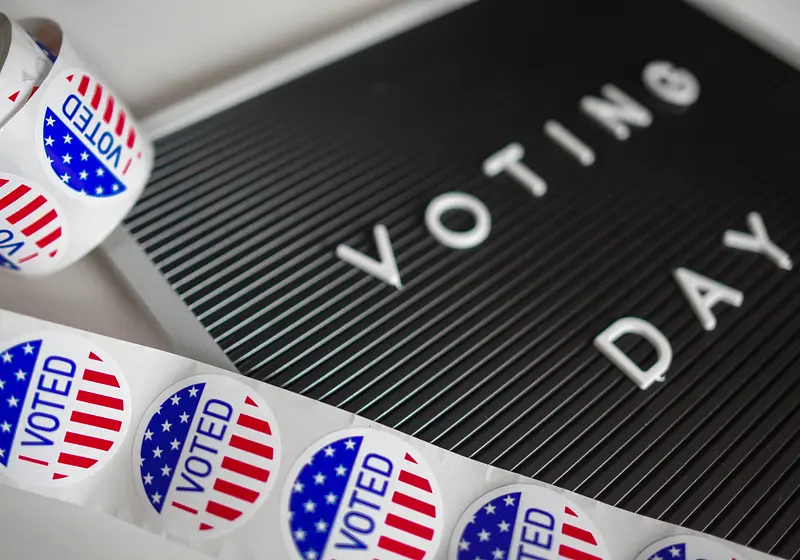On August 1st, 2023, former President Donald Trump was indicted for the third time on four felony counts relating to Mr. Trump’s attempt to overturn the results of the 2020 election, which resulted in his supporters’ January 6th attack on the Capitol.
Following the defeat of U.S. President Donald Trump in the 2020 presidential election, a mob of his supporters called to action by Trump attacked the Capitol Building in Washington, D.C., with the intent of keeping Trump in power by preventing a joint session of Congress from counting the electoral college votes to formalize the victory of President-elect Joe Biden. Trump resisted sending the National Guard to subdue the mob.

Image via Wikipedia Commons
The attack was followed by social, legal, and political repercussions, including the second impeachment of Donald Trump, the resignation of multiple members of the Trump administration, and the approval of the House for a House select committee to investigate the attack. A large-scale criminal investigation began, with the FBI opening more than 400 case files, and Trump was suspended from various social media sites for his involvement in the attack.
You can view the 45-page four-count indictment charged by special counsel Jack Smith in full here. The New York Times annotated the document for an in-depth explanation and analysis, which can be read here.
Here’s everything you need to know regarding his charges and what this may mean for his presidential campaign.
Let us slide into your dms 🥰
Get notified of top trending articles like this one every week! (we won't spam you)The Charges
The felony charges list three conspiracies targeted toward the central government’s function of holding a free and fair election. The indictment also refers to 6 unnamed and unindicted co-conspirators who assisted Trump in his efforts to overturn the results of the 2020 election and hold on to power. These individuals include four attorneys, a Justice Department official, and a political consultant.

Count 1: 18 U.S.C. § 371 (Conspiracy to Defraud the United States)
The indictment discusses five kinds of actions identified as the matter and means or ways that Trump and his co-conspirators tried to overturn the election results. The same facts are revisited to support other charges that appear in the indictment. These include in basic terms:
1. The use of knowingly false claims of election fraud to get state legislators and election officials to subvert the legitimate election results and change electoral votes for the Defendant’s opponent, current President Biden.
"That is, on the pretext of baseless fraud claims, the Defendant pushed officials in certain states to ignore the popular vote; disenfranchise millions of voters; dismiss legitimate electors; and ultimately, cause the ascertainment of and voting by illegitimate electors in favor of the Defendant."
2. The organization of fraudulent slates of electors in seven targeted states (Arizona, Georgia, Michigan, Nevada, New Mexico, Pennsylvania, and Wisconsin) attempted to imitate the procedures that the legitimate electors were supposed to follow under the Constitution and other federal and state laws.
"This included causing the fraudulent electors to meet on the day appointed by federal law on which legitimate electors were to gather and cast their votes; cast fraudulent votes for the Defendant; and sign certificates falsely representing that they were legitimate electors. Some fraudulent electors were tricked into participating based on the understanding that their votes would be used only if the Defendant succeeded in outcome-determinative lawsuits within their state, which the Defendant never did. The Defendant and co-conspirators then caused these fraudulent electors to transmit their false certificates to the Vice President and other government officials to be counted at the certification proceeding on January 6."
3. The attempt to “use the power and authority of the Justice Department to conduct sham election crime investigations and to send a letter to the targeted states that falsely claimed that the Justice Department had identified significant concerns that may have impacted the election outcome; that sought to advance the Defendant’s fraudulent elector plan by using the Justice Department’s authority to falsely present the fraudulent electors as a valid alternative to the legitimate electors; and that urged, on behalf of the Justice Department, the targeted states’ legislatures to convene to create the opportunity to choose the fraudulent electors over the legitimate electors.”
4. The attempt to recruit the Vice President (Mike Pence) to use his ceremonial role at the January 6th certification proceeding to fraudulently change the election results.
"First, using knowingly false claims of election fraud, the Defendant and co-conspirators attempted to convince the Vice President to use the Defendant's fraudulent electors, reject legitimate electoral votes, or send legitimate electoral votes to state legislatures for review rather than counting them. When that failed, on the morning of January 6, the Defendant and co-conspirators repeated knowingly false claims of election fraud to gathered supporters, falsely told them that the Vice President had the authority to and might alter the election results, and directed them to the Capitol to obstruct the certification proceeding and exert pressure on the Vice President to take the fraudulent actions he had previously refused."
5. Exploitation of the disruption at the Capitol as violence ensued on January 6th.
"After it became public on the afternoon of January 6 that the Vice President would not fraudulently alter the election results, a large and angry crowd— including many individuals whom the Defendant had deceived into believing the Vice President could and might change the election results— violently attacked the Capitol and halted the proceeding. As violence ensued, the Defendant and co-conspirators exploited the disruption by redoubling efforts to levy false claims of election fraud and convince Members of Congress to further delay the certification based on those claims."
A conviction on this charge would be punishable by up to 5 years in prison.
Count 2: 18 U.S.C. § 1512(k) (Conspiracy to Obstruct an Official Proceeding)
The indictment argues that there was a conspiracy to obstruct the official proceedings of the election, particularly the counting of the electoral votes on January 6th. A conviction on this charge would be punishable by up to 20 years in prison.
Count 3: 18 U.S.C. §§ 1512(c)(2), 2 (Obstruction of and Attempt to Obstruct an Official Proceeding)
This count relates closely to the previous one. It focuses directly on the act and attempted act of obstructing and impeding (or disrupting) the joint session of Congress (an official proceeding).
According to the New York Times, prosecutors have successfully used this law to charge numerous individuals who participated in the January 6th storming of the Capitol, accusing them of “obstructing the joint session of Congress to certify Mr. Biden’s victory.” A federal appeals court in April upheld the feasibility of applying that charge to perpetrators in the Capitol attack. Its use against Trump may raise “different issues” as he did to take part in the riot personally.
A conviction on this charge would be punishable by up to 20 years in prison.
Count 4: 18 U.S.C. § 241 (Conspiracy Against Rights)
"The defendant...did knowingly combine, conspire, confederate, and agree with co-conspirators, known and unknown to the Grand Jury, to injure, oppress, threaten, and intimidate one or more persons in the free exercise and enjoyment of a right and privilege secured to them by the Constitution and laws of the United States—that is, the right to vote, and to have one's vote counted."
This statute was enacted after the Civil War during Reconstruction. It was the first in a series of measures, known as the Ku Klux Klan Acts and collectively called the Reconstruction Amendments, designed to protect the rights guaranteed by the 13th, 14th, and 15th Amendments. In recent history, this law has been used to punish election interference.
A conviction on this charge would be punishable by up to 10 years in prison.
For more detail and information, read: “Trump is charged under civil rights law used to prosecute KKK violence.”

Image via Wikipedia Commons
Take the Quiz: Which Indian city is the perfect holiday spot for you!?
Let's match you with an Indian city that you would love!
The Outcome
According to polls by the New York Times and the BBC, support for Trump’s candidacy remains strong, despite his potential convictions and legal jeopardy. Former president Donald Trump is currently the apparent forerunner for the Republican presidential nomination in 2024.
Trump also faces a possible fourth indictment in Georgia for pressuring state officials to reverse his defeat in 2020. According to the BBC, “...there is little evidence that the third indictment or even a fourth will measurably alter the landscape of the Republican presidential race.” In fact, it is claimed that his criminal charges have actually strengthened his position, and most Republican voters see the charges as being politically motivated.
Former President Trump has pleaded not guilty to the January 6th related charges. The next case hearing is set for August 28th, five days after the first Republican primary debate.
For further inquiry and reading, the New York Times has been covering both the January 6th case and the 2022 Midterm Elections. The Washington Post has also been providing live updates on Trump’s case and arraignments, which can be viewed here.





.jpeg)





